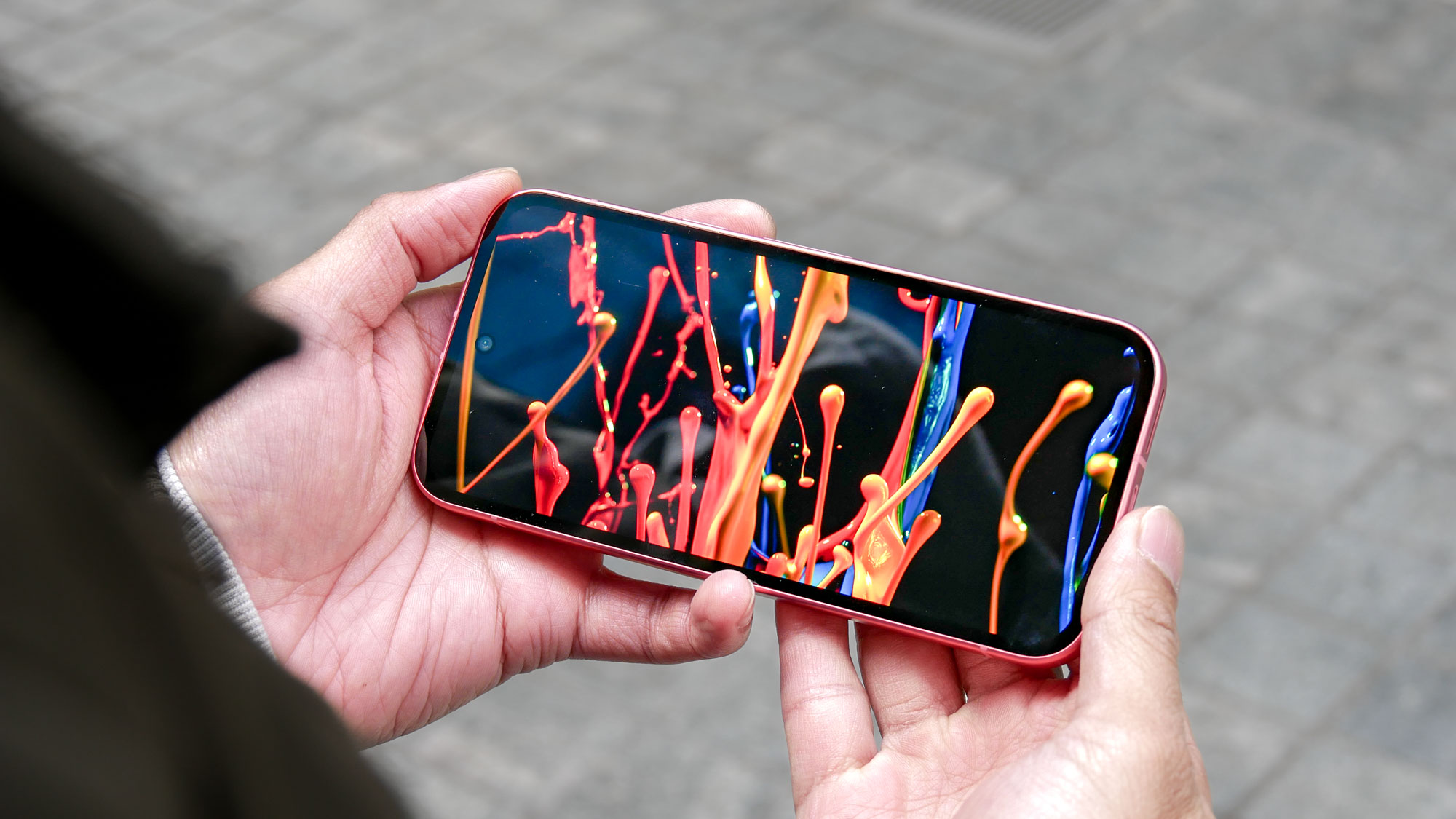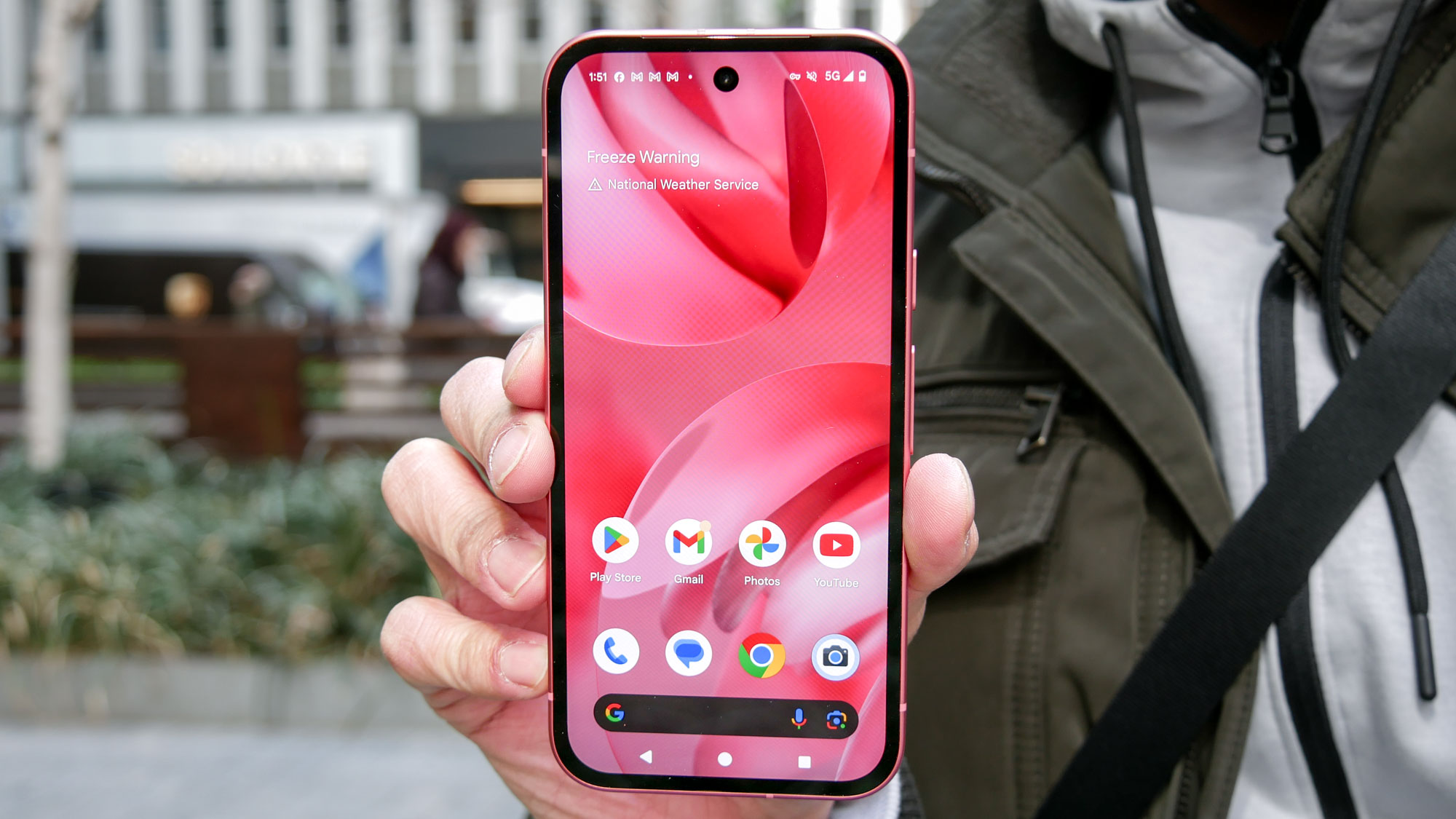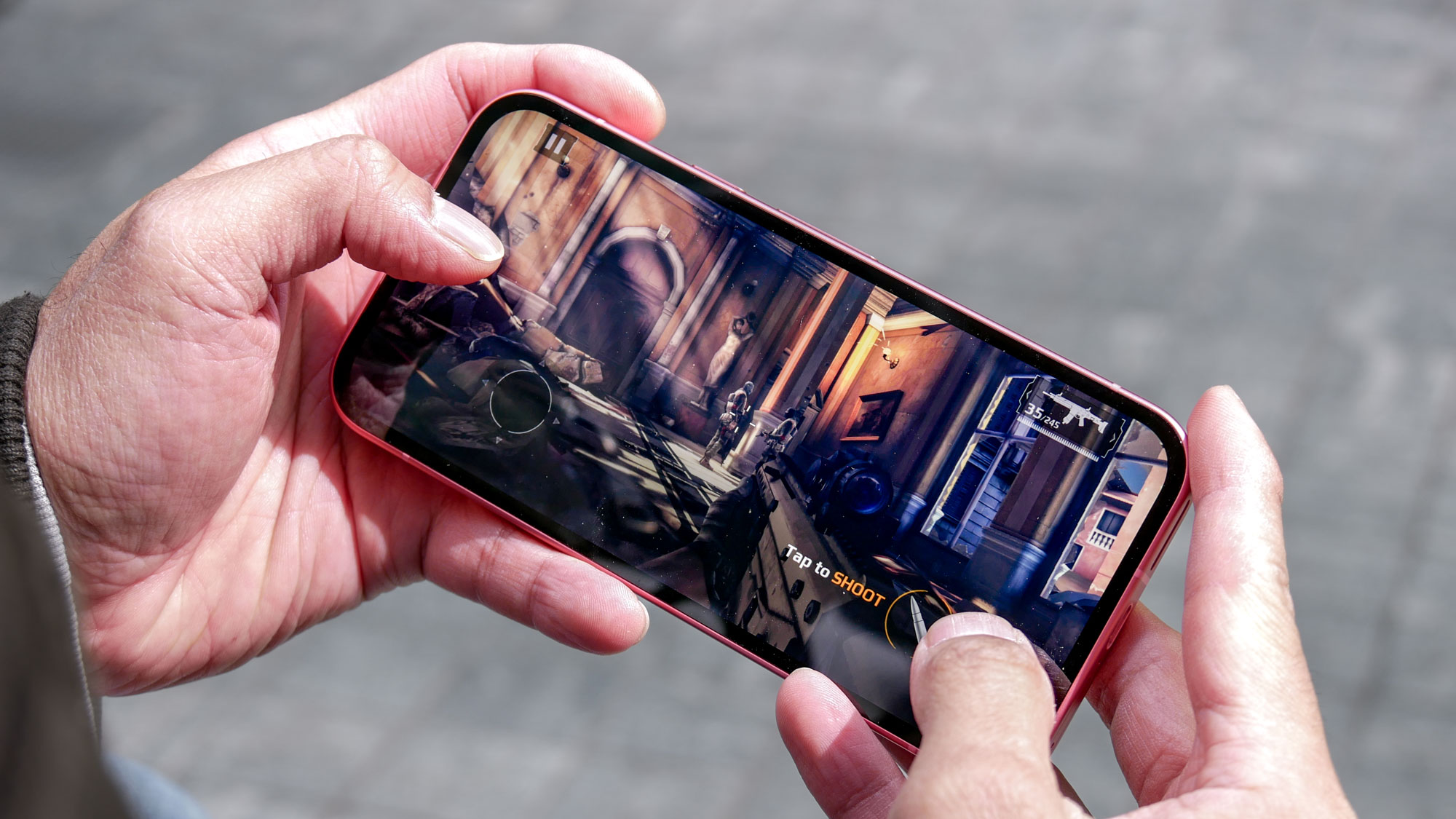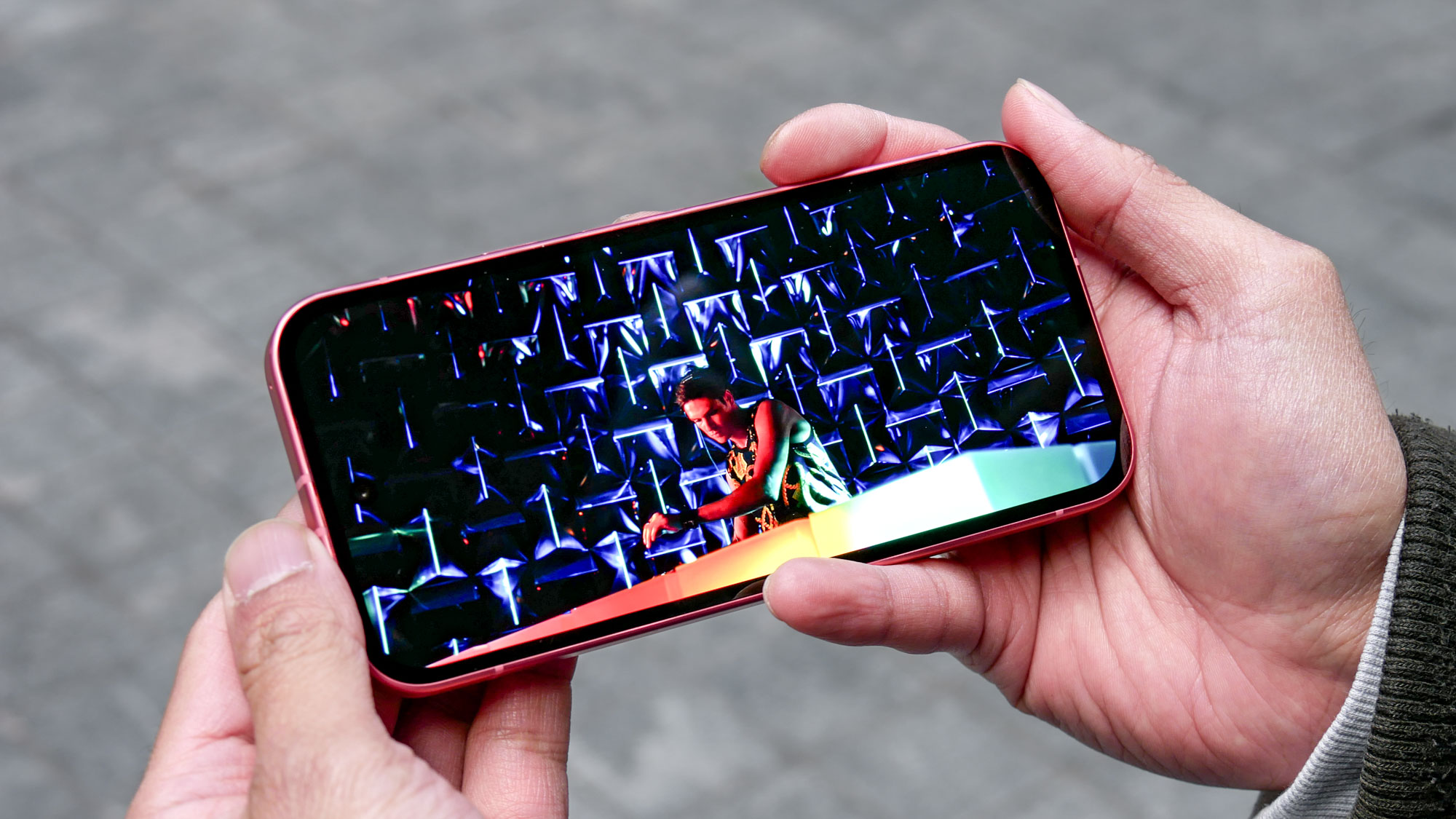Google Pixel 9a display tested — this blows away the iPhone 16e
Google’s display shows a noticeable improvement in both brightness and color

The Google Pixel 9a is here, and it made it to top of our list of the best cheap phones at only $499. And one area that we noticed showed a marked improvement was the quality, brightness and color options available on the 6.3-inch Actua display.
Google has stated that the Pixel 9a has a peak brightness of 2,700 nits, but we needed to test this for ourselves. The reason for this is simple: the recorded brightness of a screen can be affected by several different factors that are hard to account for. We aim to find the average brightness when we test phones to make sure that we have the best representation of what a customer can expect.
However, it can be easy to get lost in all the numbers that come with test display results. As such, we've compiled an easy-to-understand breakdown of our main benchmarks for the Pixel 9a, compared to other devices, to make it.
Google Pixel 9a: Brightness test results

The first thing we test on a phone is the brightness by measuring the nits outputted by the device. For reference, nits quantify the amount of light, or luminance, emitted by screens. The higher the nit number on a display, the more visible the screen; it also gives a good idea of how easily you'll be able to see what's on the screen in direct sunlight.
| Row 0 - Cell 0 | Peak brightness (nits) |
Pixel 9a | 2,076 |
Pixel 8a | 1,378 |
Pixel 9 | 2,390 |
iPhone 16e | 1,028 |
Nothing Phone 3a Pro | 1259 |
Galaxy S25 | 1,789 |
One Plus 13R | 1,104 |
The Google Pixel 9a managed a peak brightness of 2,076 nits, which is noticeably higher than other models in the same price range, and even the Galaxy S25, although it still falls behind the Pixel 9.
In comparison, most of the other cheap phones struggle to reach 1,500 nits, with many falling lower than that. For instance, the iPhone 16e only manages to reach a peak of 1,208 nits, while the Nothing Phone 3a Pro hits a high of 1,259 nits.
However, all the brightness in the world doesn’t really matter if the colors aren’t displayed properly. Thankfully, our tests have shown that the Google Pixel 9a is no slouch in that department.
Sign up to get the BEST of Tom's Guide direct to your inbox.
Get instant access to breaking news, the hottest reviews, great deals and helpful tips.
Google Pixel 9a: Color Gamut

When we test how well a screen can display colors, we use the DCI-P3 standard; simply put, the higher the number, the more colors you'll be able to see.
| Row 0 - Cell 0 | DCI-P3 Adaptive/Neutral (%) |
Pixel 9a | 94.2 / 83.8 |
Pixel 8a | 89.6 / 77.2 |
Pixel 9 | 84.5 / 75.5 |
iPhone 16e | 90.2 |
Nothing Phone 3a Pro | 108.9/78.7 |
Galaxy S25 | 108.2 / 91.7 |
One Plus 13R | 121.6 / 86.3 |
When it comes to the Pixel 9a, it is apparent that Google has made some marked improvements over previous generations. The phone manages to display 94.2% of the listed colors while in Adaptive mode, which is a stark increase over the Pixel 8a and the Pixel 9.
However, this is an area that Google is known to fall short in as, aside from the iPhone 16e, the other phones offered a much higher range.
Google Pixel 9a: Color Accuracy
| Row 0 - Cell 0 | Delta-E color accuracy (lower is better) |
Pixel 9a | 0.24/0.20 |
Pixel 8a | 0.24 / 0.29 |
Pixel 9 | 0.30 / 0.20 |
iPhone 16e | 0.26 |
Nothing Phone 3a Pro | 0.27 / 0.2 |
Galaxy S25 | 0.25 / 0.31 |
One Plus 13R | 0.3 / 0.21 |
However, the real shock is the Delta-E numbers, which show one of the biggest improvements we’ve seen in a long time.
Unlike other tests, we want the Delta-E numbers to be lower rather than higher. That’s because the lower the number, the more accurate the color on the display is.
Looking at the numbers, the Pixel 9a manages to score either better or equal to the other phones on the list. Usually, when measuring Delta-E numbers you want something as close to 0 as possible, as 0 means there is no perceivable difference between the two colors. As you likely noticed, none of the models in the lineup score over 1, so that means that the colors are fairly accurate.
However, there are subtle differences even at this level, and out of all the models, the Google Pixel 8a manages to get the closest to 0. While the difference might not be astounding, a keen eye will spot the difference, and the experience for the user is improved even if they don’t always notice.
Google Pixel 9a display: Verdict

All of this comes together to show that the Google Pixel 9a has a lot to offer when it comes to color presentation. The images you’re looking at will offer a stunning and lifelike range, much more so than other phones in Google’s collection.
When we think of what the Google Pixel 9a offers, we have to take into account the cost of the phone. Usually, for under $500, we would expect something that doesn't quite match the more expensive phones on the market. However, the Pixel 9a has taken position as the best value model in our best phones list primarily because of what it offers users for the cost.
For a full breakdown of the device, please check out our review of the Pixel 9a, as well as our breakdown of the Pixel 9a's performance.
More from Tom's Guide

Josh is a staff writer for Tom's Guide and is based in the UK. He has worked for several publications but now works primarily on mobile phones. Outside of phones, he has a passion for video games, novels, and Warhammer.
You must confirm your public display name before commenting
Please logout and then login again, you will then be prompted to enter your display name.
